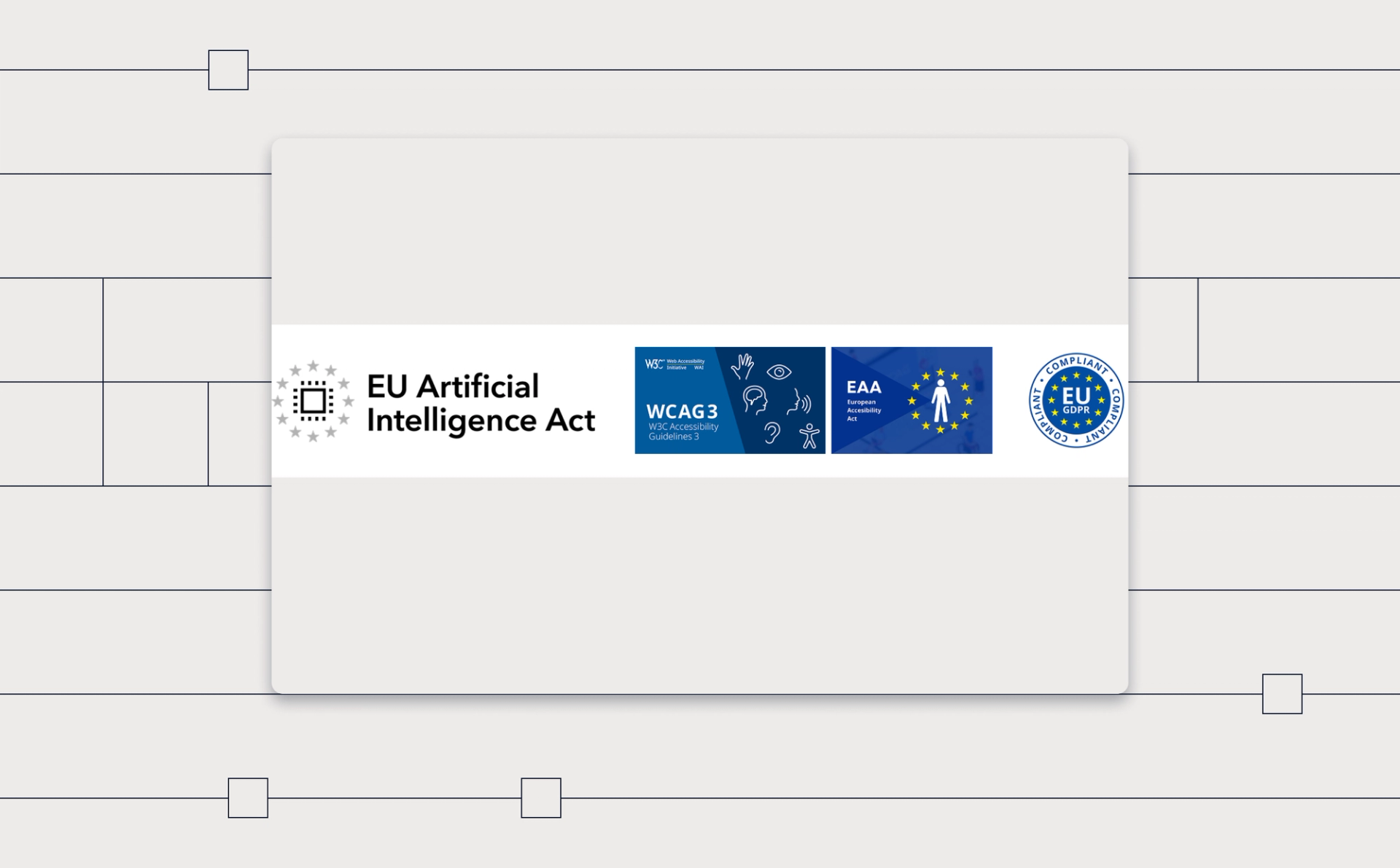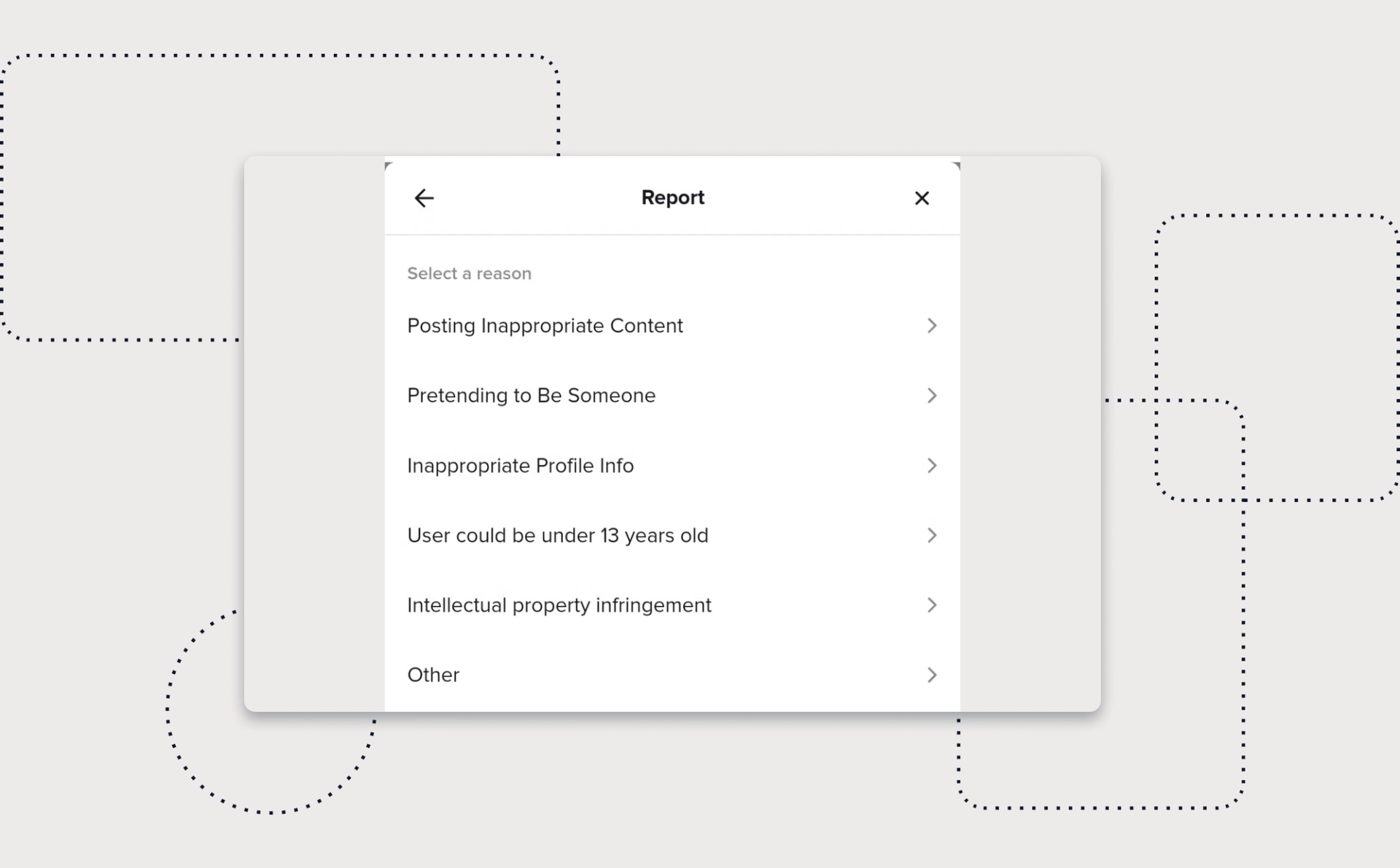
Sustainable digital solutions are hard to find. It’s challenging to keep up with meaningful trends and relevant regulations, in the EU’s complex environment of regulations especially so. This is due to the ever-evolving landscape of digital technologies. This edition of the newsletter aims to provide a robust overview of current and upcoming regulations that play a significant role for website operators and product owners.
We’ll delve into how AI affects search engine optimization (SEO), a topic we previously addressed. We use this opportunity to highlight once more how managing intellectual property in a structured content store will move you closer towards an AI-ready, sustainable digital future. And for your own sustainable digital environment we’ll highlight a neat and very old technology that can enhance personal online experiences through individual content curation.
We want to clarify that this newsletter was not written using AI, despite the the overuse of “ever-evolving” and all the other phrases that suggest otherwise. Apparently .

Regulations Link to this headline
Former Meta Lobbyist Questions EU's Tech Regulation Strategy
In a candid FT Tech Tonic interview, European Parliament member and former Meta lobbyist Aura Salla challenges the EU’s regulatory approach to Big Tech.
She argues that while regulations like the Digital Markets Act aim to control American tech giants, they primarily burden European companies trying to scale globally. According to Salla, companies like Google and Meta easily navigate these rules with “armies of lawyers,” while European scale-ups struggle under the same complex requirements, limiting their competitive potential on the world stage.
Here’s the full podcast episode on 🎙️FT Tech: Link .
A look at the press release page of the Irish Data Protection Commission reveals that Meta cannot fully avoid these regulations. Just last December it was fined €251 million for breaching the personal data of 29 million Facebook users. A recent legal challenge of TikTok in Germany shows that big tech platforms are held accountable under these regulations.
A Fake Fake Report Button Link to this headline

The button to report fake, inappropriate or copyrighted content on TikTok is probably not the one you want to use. The button to report a video (which is hidden behind the “share” icon) does not work as expected.
A German lawyer who’s profile on TikTok including all his videos had been plagiarized brought a case to court after his report didn’t have any effect. Only after using his law firm’s official letterhead for sending a notice to TikTok the fake profile got removed.
During the court proceedings TikTok claimed that the “wrong way” was used to report the fake profile. The in-app “report” button apparently triggers only an automated evaluation that is augmented with manual checks – sometimes.
The court ruled that TikTok, in its automated response, said they received the report, that they looked into it and that they did not find a violation of their terms and conditions or the local laws and that in consequence they are liable for the misjudgement of not finding any violations.
If you actually want to get content deleted because its fake or fraud you have to use their online forms. These forms are buried somewhere in their imprint or legal pages which are not directly accessible from within the app – or at least not obviously so.
Here are the links that should allegedly be working correctly:
Direct Link to IP report:🎵 Link .
Direct Link to inappropriate content:🎵 Link .
To be found via the Impressum:🎵 Link .
Or the Contact Page:🎵 Link .
The Not-Your-For-You-Page Link to this headline
The For-You-Page on TikTok features algorithmically selected videos. Even if you report videos that are featured on this page, they do not disappear. It’s hardly news that the algorithmic feed curation can have a huge influence on our mental well-being.
And on TikTok it seems to be hard to get rid of content even on the For-You-Page as this report by Correctiv outlines.

Self-Regulation and Workarounds Link to this headline
TikTok does have limits though as to what can be published. The word “kill” for example violates their community guidelines and the algorithm will apparently block each instance of the word being used.
As a result the word “unalive” became a popular workaround and found its way into colloquial language. This video goes into detail how not only language but identity is being shaped by how the algorithm works—and how we should be aware of these trends and their origin.
Read more below about the impact of algorithms on our lives and why it might be beneficial to opt-out of for-you-pages, compiled by a computer.
While these examples show how regulations work to protect users from harmful or misleading content, new regulation is underway to ensure that content will be available to everybody—including audiences who might have had a hard time getting access until now. The European Accessibility Act is being implemented in Germany to foster a more inclusive digital environment.

… is our new favorite word. Literally translated to “accessibility strengthening act” it is part of the German implementation of the European Accessibility Act (EAA). Here’s what you need to know:
It will come into effect on 28th June, 2025.
It’s a regulation that requires website operators to comply with the standards for accessible web design.
This is not limited to certain industries but rather true for most professional websites or web portals or web apps or native apps.*
Officially there’s no grace period and necessary changes are required to be rolled out with the first update after the law comes into effect.
A digital product, website or app is considered accessible when it can be used by individuals using assistive technologies without requiring vision, hearing, or specific motor actions for navigation. There’s several guidelines that can help determine whether or not a product is accessible.
The good news is: most websites are fully accessible to begin with—as this motherfucking website offensively illustrates. The bad news is: as soon as you start to customize a website it’s easy to break its accessibility. Building an accessible website with a rich array of features will be more complex. Still, as long as you stay close to the “platform” and work along best practices, it is entirely possible to create a fancy website that is fully accessible.
* There’s an official tool to determine if the BFSG applies to your online presence (German): https://bfsg-gesetz.de/check/
A good source to learn more is the “Working Draft” podcast episode with background information and expert insights (German): Podcast .
Accessibility Audits Link to this headline

If you’re unsure if your website or app is compliant with accessibility guidelines there’s tools for evaluation of the technical accessibility. A more involved version of that is to conduct an accessibility audit which will surface deeper insights and yield a more complete picture of shortcomings and opportunities to improve the accessibility. Audits provide valuable context and help to prioritize issues based on their potential impact. They also clarify ambiguities as an experienced auditor will have real-world insights into assistive technologies and what are common issues—even if they’re not being picked up by an automated tool. Like a good doctor, a good audit looks beyond the symptoms and instead takes the full picture into account.
And yet, there’s a major flaw: They are an inefficient way of implementing accessibility. In “The infuriating inefficiency of accessibility audits” Eric Eggert, a dedicated Web Accessibility Expert, outlines how taking care of an accessible implementation after a product or feature launch will always be costly, way more so than taking care of it from the get go.
This reflects our experience with user experience design and UX Audits as well. There’s just many pitfalls you can avoid when thinking about usability and accessibility early on.
To check your website for web accessibility you can use tools like: https://wave.webaim.org/
The complexity of these digital regulations can feel overwhelming, especially for smaller organizations. So, how is compliance accounted for in real-world scenarios?
AI Act, GDPR, … Is Compliance Holding You Back? Link to this headline

In a recent podcast episode Nils and Steffi discussed the million dollar question how to painlessly build compliant digital solutions quickly. The answer of course is: it’s complicated. But there’s a powerful question that you can ask a lawyer: can we make this work? This will surface potential issues and mitigate big risks, especially when handling personal data.
You do not need a lawyer watching every step along the process. You dowant to understand what are strict requirements and what needs to be avoided. And the earlier you know that, the less risk you face and the cheaper it is to accommodate legal constraints. More than that, though, involving lawyers early in the process is an opportunity for them to contribute long-term solutions rather than facing unsolvable challenges once a website or app is released.
Steffi shares her experience being brought into projects at various stages and how not asking for consent won’t get you access to more data—quite the contrary. The podcast episode offers actionable insights on product development and integrated workflows, for example:
- Developing a compliant solution is creative work. Treat it as such and not as a necessary evil. - The question should not be “are we allowed to do this?”, but rather “how can we reach our goal?” - Get everyone, including legal into the room early on during concept. - Get them to the table, just like every other expertise. More likely than not it will save money.
Listen in for more: The Impact of GDPR and AI Regulations w/Steffi Besselink.

Steffi Besselink, LL.M, CIPP/E, AIGP European Lawyer and Data Protection Officer AI, GDPR and Contracts
Get in touch with her here: LinkedIn Profile
Impact & Outlook Link to this headline
Legal guardrails are becoming stronger and thus development and operation of digital platforms of any sort will need to take into account legal and compliance aspects. This might be a good thing though? It strengthens consumer rights and as we’ve seen above these are not always taken seriously right now.
For us at Dinghy this poses the question as to when these things should be considered during the development of digital products, platforms and websites. We have the feeling that – as with experience design and accessibility – it should be integrated into the workflows early on. Interdisciplinary workflows allow for early course corrections and from a design perspective constraints are often a good way to spark curiosity, creativity and innovation.

Don’t throw away your phone Link to this headline
… or how a 25+ years old standard puts an end on infinite scrolling and might save you from insanity. It’s hardly news that “doomscrolling” and social media put a strain on personal well-being and society in general.
We are witnessing an ongoing battle of algorithms versus humanity. The RSS standard from 1999 might be a good solution to this problem.
The People vs The Algorithm Link to this headline
We’re all exhausted. Scrolling endlessly, jumping from one dopamine hit to another, getting fed whatever the algorithm thinks will keep us hooked the longest. The internet wasn’t always like this. It used to be more like a library or a place where you actively searched for what you wanted instead of having it shoved in your face. Now it’s a casino, designed to keep you spinning the wheel.
"Your attention is the product that's being sold in a three-way marketplace between tech platforms, advertisers and you—except you’re not really at the bargaining table."
— Tristan Harris, co-founder of the Center for Humane Technology (former Google Design Ethicist)
By now we all know that the incentives are stacked against the users of online media in general and social media in particular. But why is this so bad?
Psychological Consequences Link to this headline
Our brains don’t really work like that. We evolved to process information at human speed, not algorithmic speed. Brain scans of heavy social media users showed patterns similar to those seen in people with addiction. The constant hits of novelty, outrage, and occasional validation are literally rewiring our neural pathways.
Short-form video content has become increasingly popular, with TikTok, Snapchat and YouTube emerging as the leading platforms for sharing bite-sized videos. Research suggests that prolonged consumption of short-form videos can lead to difficulties in concentration, information retention, and a preference for instant gratification over longer content, ultimately affecting attention span and academic focus. Humans have a natural limitation when it comes to focused attention. Our brains can only maintain concentration for so long before we begin to lose momentum. But as we mindlessly scroll through social media feeds, the constant influx of short-form videos can create a sense of FOMO (fear of missing out) that drives us to keep watching.
Out of boredom, habit, or anxiety we end up “doomscrolling” an addictive and infinite feed.
Social Consequences Link to this headline
In addition to the individual impact there are broader societal consequences caused by the algorithm. The information we consume shapes our worldviews and influences the content recommended by algorithms. This creates an increasingly narrow reality tunnel. As content algorithms prioritize engagement, they tend to amplify the provocative, outrageous, and divisive. Because content that triggers strong emotions, particularly outrage, spreads fastest across networks we end up in digital landscape that rewards extremism and punishes nuance.
Why you need more RSS in your life Link to this headline
How can we escape this dilemma? What options do we have to take back control of what we read, see, and engage with online? Enter RSS.
What are RSS (or Atom) Feeds?
RSS (Really Simple Syndication) is an old-school technology that feels more relevant than ever. It allows users and applications to access updates to websites in a standardized, computer-readable format.
Think of it as a direct pipeline between you and the content you actually care about but without the ads, algorithms, or hidden agendas. Websites, blogs, newsletters, and even social media platforms (in some cases) offer RSS feeds, which you can subscribe to using an application called “RSS reader”.
No more doomscrolling. No more FOMO. Just the stuff you actually want to read, in the chronological order it was published in.
How does it work?
Instead of keeping a list of bookmarked websites and visiting each of them, instead of letting an algorithm decide how to aggregate these pages, RSS feeds send updates straight to your reader. You open the app, and boom💥 everything you care about is there, waiting for you. Often you get to read the full column right inside of the reader app. Without tracking, without distractions, and without endless "you might also like this" links.
RSS offers several distinct advantages:
Complete control: You decide what enters your information diet
Chronological ordering: No algorithm decides what's "important"
No advertisements or tracking: Most RSS readers are clean, minimal interfaces
Intentional consumption: You actively choose when to check for updates
Reduced FOMO: Once you’ve read your feeds, you’re “done”—there is an end!
Apps That Make RSS Look and Feel Good
If you’re wondering what RSS looks like in action, here are some popular RSS readers:
Feedly – Clean, smart, and packed with features
Inoreader – Highly customizable with a free tier
NetNewsWire – A beautiful, open-source reader for Apple users
Readwise Reader – A newer player that combines RSS with a read-it-later experience
Making the Switch: Practical Steps Link to this headline
Transitioning to RSS is remarkably simple:
- Choose an RSS reader: see above
- Add your favorite sites to the reader: In many cases pasting the URL of a website will let the reader discover the feed URL automatically. If not follow step 3.
- Manually find the RSS url: Many websites display an RSS icon (🔶) or list feeds in their footer.
- Set a specific time to check your reader: Treat it like reading a morning newspaper rather than an always-available distraction.
Many major publications still maintain RSS feeds, and tools exist to create feeds for sites that don’t officially offer them. You can even subscribe to specific authors or topics rather than entire publications.
Here’s the link to the Dinghy blog’s RSS feed . Subscribe to our latest blog posts by adding it to your feed reader of choice.
Further reading:
An article how to subscribe to specific subreddits using RSS: I Ditched the Algorithm for RSS—and You Should Too
If you are indeed considering to throw away (the smart part of) your phone, you might be interested in switching to the distraction free minimal phone: https://minimalcompany.com/

PS: if you need to be on your phone but still want to relax a bit, consider going to “It is as if you were on your phone” (mobile only link).